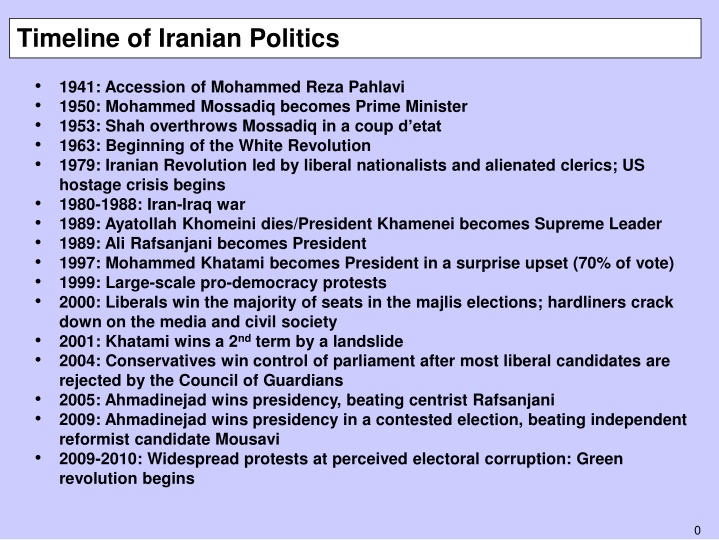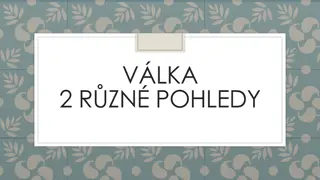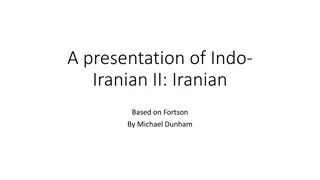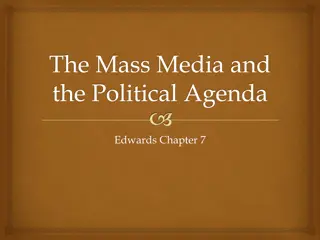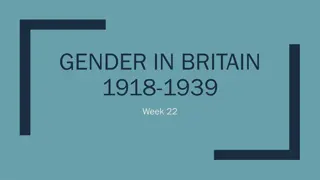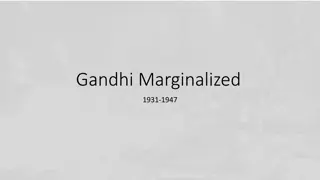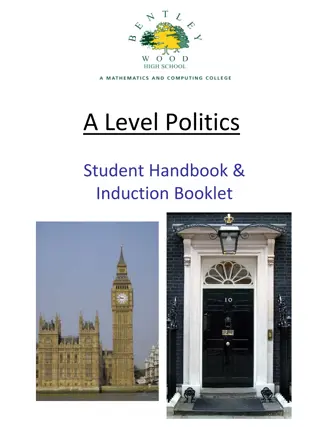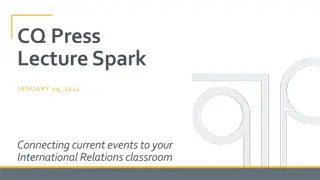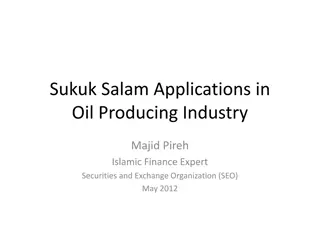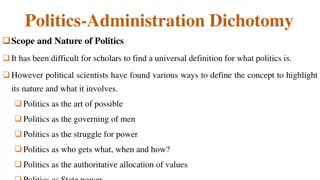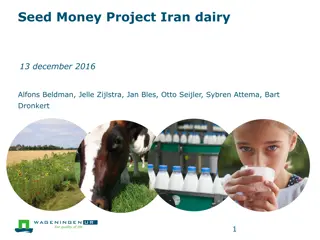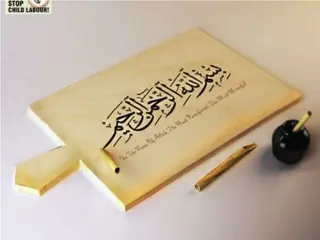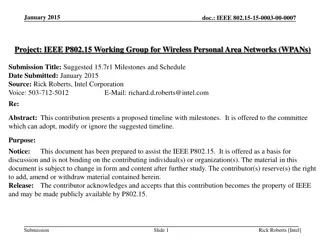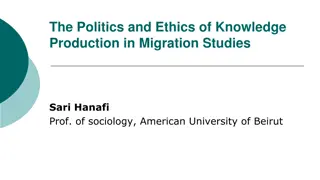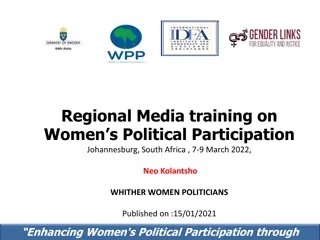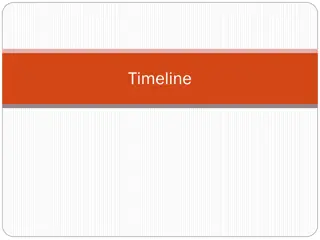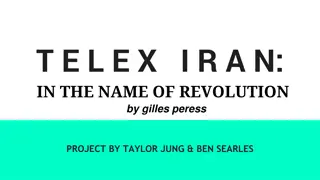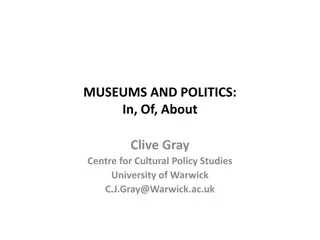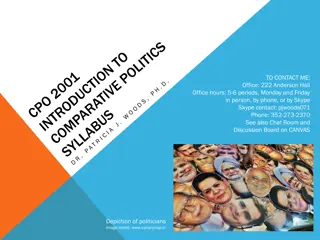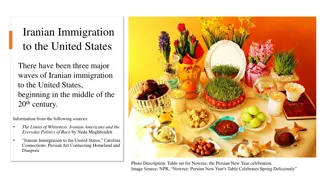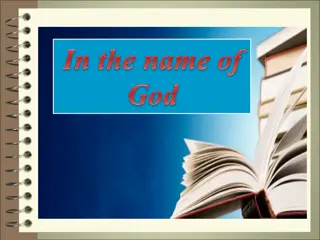Timeline of Iranian Politics
The timeline of Iranian politics from 1941 to the present day reflects significant events such as the Iranian Revolution, the Iran-Iraq war, and the rise of anti-American sentiment. The country's political landscape has seen upheavals, revolutions, and transitions, shaping its modern history. From the overthrow of Mossadiq to the contested elections of Ahmadinejad, Iran's political journey is marked by internal struggles, external conflicts, and shifts in leadership.
Download Presentation

Please find below an Image/Link to download the presentation.
The content on the website is provided AS IS for your information and personal use only. It may not be sold, licensed, or shared on other websites without obtaining consent from the author.If you encounter any issues during the download, it is possible that the publisher has removed the file from their server.
You are allowed to download the files provided on this website for personal or commercial use, subject to the condition that they are used lawfully. All files are the property of their respective owners.
The content on the website is provided AS IS for your information and personal use only. It may not be sold, licensed, or shared on other websites without obtaining consent from the author.
E N D
Presentation Transcript
Timeline of Iranian Politics 1941: Accession of Mohammed Reza Pahlavi 1950: Mohammed Mossadiq becomes Prime Minister 1953: Shah overthrows Mossadiq in a coup d etat 1963: Beginning of the White Revolution 1979: Iranian Revolution led by liberal nationalists and alienated clerics; US hostage crisis begins 1980-1988: Iran-Iraq war 1989: Ayatollah Khomeini dies/President Khamenei becomes Supreme Leader 1989: Ali Rafsanjani becomes President 1997: Mohammed Khatami becomes President in a surprise upset (70% of vote) 1999: Large-scale pro-democracy protests 2000: Liberals win the majority of seats in the majlis elections; hardliners crack down on the media and civil society 2001: Khatami wins a 2nd term by a landslide 2004: Conservatives win control of parliament after most liberal candidates are rejected by the Council of Guardians 2005: Ahmadinejad wins presidency, beating centrist Rafsanjani 2009: Ahmadinejad wins presidency in a contested election, beating independent reformist candidate Mousavi 2009-2010: Widespread protests at perceived electoral corruption: Green revolution begins 0
Revolution in Iran Revolutionary forces in Iran Protests were led by the ulema in 1963 under Khomeini and urban terrorist groups emerged Shah became totally repressive after 1975; taking away autonomy of clerics and the bazaari merchants Economy was in turmoil with rampant inflation from excessive oil spending Opposition spoke out and was led by the Freedom movement in Iran (liberal) and militant ulema (conservative-revolutionary) Militant ulema led by Ayatollah Khomeini pressed for rule by Islamic clerics A cycle of religious protests, police violence, mourning protests, police violence, became more and more pronounced in 1978 The shah left for Egypt in exile in 1979, and the Freedom Movement and Khomeini were left to fight it out; Khomeini eventually won 1
Anti-Americanism in Iran Support for the shah The CIA coup; support for the Shah s repression The hostage crisis From 1979 to 1981; Iranians held US diplomats after taking over the embassy Carter lost the election to Reagan; the hostages were released as a show of good will toward Reagan The Iran-Contra scandal US sold arms to its enemy Iran in the mid-1980s, to get help freeing American hostages held by the Lebanese Hizbullah The earnings were illegally diverted to a rebel movement in Nicaragua, the Contras The process of demonization Anti-US rallies; US as the devil: Death to America becomes a popular slogan America frames Iran as the center of the axis of evil 2
Key characters in Iranian politics Former President Rafsanjani Supreme Leader Ali Khameini Ayatollah Ruhollah Khomeini http://upload.wikimedia.org/wikipedia/commons/thumb/f/f6/Mir_Hossein_Mousavi_in_Zanjan_by_Mardetanha1.jpg/225px-Mir_Hossein_Mousavi_in_Zanjan_by_Mardetanha1.jpg Current President Mahmoud Ahmadinejad Presidential Candidate Mir-Hossein Mousavi Former President Khatami 3
Iranian political institutions Dual nature of institutions: Secular and Religious parallels Result of intense debates during the revolution about the constitution Supreme leader (Faqih) Ultimate veto power over most everything; vacillates between using it and not Has strong appointment powers over the judiciary and the military Like Plato s philosopher-king; life term; elected by the Assembly of Experts President Strongest executive except for the faqih Independently elected Majlis Contested and reasonably powerful legislative body Council of Guardians Designed to keep any legislation from violating the shari a Also vets political candidates; appointed directly or indirectly by the supreme leader Has vetoed every single reform law passed by the majlis in recent years Expediency Council Designed to resolve conflicts between the Majlis and the Council of Guardians In 2000, it allowed some Majlis legislation to pass over the Council, but is now very conservative 4
Elected and unelected institutions in Iran File:Iran gov power structure.svg The process of vetting who can run for election is key to understanding how these institutions interact 5
Liberalism vs. clericalism in Iran Political divisions Political parties were illegal for a long time; still act as informal blocs Groups of independent candidates (most of whom are clerics), who tend to ally with each other Combatant clerics Care deeply about maintaining political power; actively defend the Supreme Leader Are conservative on key social and religious issues Militant clerics Leftist splinter from the combatant clerics; held considerable power in the government in the late 1980s Have argued for more power to the majlis Were shut out of government in the early 1990s, but did well in the 1997 elections supporting Khatami Servants of Construction Non-clerical group of technocrats formed in the mid-1990s Fit somewhere between the two groups; supporters of the former President Rafsanjani Supported Khatami in the 1997 elections 6
2008 Iranian legislative election results Independents 13% Conservatives 67% Religious Minorities 2% Reformists 18% File:The 31st Majlis of Iran parties seating.PNG Since Khatami, the majlis has seen a big shift towards the conservatives, in large part due to active vetting 7
The potential for political reform in Iran File:Iranian presidential election 2009, Mousavi supporters Tehran.jpg Iran s underlying liberal culture Many Iranians resent strict control of the public sphere Official ideology vs. public preferences Challenges to the Iranian regime Disillusionment of reformers after Khatami s presidency Reasons for Ahmadinejad s political success: populism, economic redistribution Centralization of power in the Council of Guardians and Revolutionary Guard Most Iranians no longer remember the Shah Fragmentation of elites over the direction of the revolution The 2009 elections Ahmadinejad faced a credible challenge in a new revolutionary reformer: Mousavi Ahmadinejad officially won the election by 2/3 of the vote, but there was some fraud Mobilization as part of the Green Revolution Mousavi leads supporters in a campaign of popular protest: where is my vote? Hundreds of thousands join in peaceful protests across Iran Repression triggers further protests Costs of mobilization become too high and the protests slow down 8
Images from the Green Revolution File:Iranian presidential election 2009, Mousavi supporters Tehran.jpg 9
